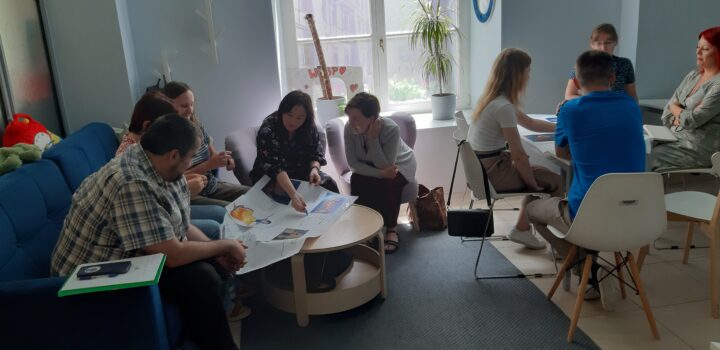Connecting Living Heritage and Tourism in Krakow
The vibrant city of Krakow, renowned for its cultural richness, has long been a hub for living heritage. Recently, a workshop held at the Intangible Heritage Interpretation Centre of Krakow—a part of the Museum of Krakow—brought together an interesting mix of participants to explore how the living heritage community could engage with the growing tourism sector. The focus of this initiative was on nativity scene (szopka) makers, a group deeply rooted in Krakow's heritage. These szopka makers take part in the annual szopka competition, striving to make the most beautiful Krakow nativity scene and to be awarded by the jury.

© Muzeum Krakow
Understanding community expectations
The workshop’s primary aim was to delve into the perspectives of the living heritage community, understanding their expectations and concerns about the increasing intersection between their craft and tourism. As cultural practitioners, these artisans have a rich history of creating and showcasing nativity scenes, yet their relationship with tourism presents both opportunities and challenges.
By organising a live workshop, the project team sought to create an interactive environment. The session was structured as a moderated discussion, drawing on protocols specifically adapted for engaging living heritage communities. The format encouraged open dialogue, giving participants the confidence to share their thoughts and ideas.
A historic venue for an interesting discussion
The workshop’s setting was emblematic of its purpose: the Intangible Heritage Interpretation Centre of Krakow, a dedicated space within the Museum of Krakow. The venue not only symbolises the city’s commitment to safeguard its living heritage but also provides an inspiring environment for dialogue. With 15 nativity scene makers who had previously taken part in the szopka competition, and many of them already well-acquainted with each other and the museum staff,the atmosphere was both collegial and productive.

© Monika Widzicka
A programme designed for collaboration
The workshop agenda was carefully designed to balance informative discussions with interactive activities. The session began with icebreakers, fostering a relaxed and welcoming atmosphere. The project team then introduced the initiative, outlining its goals. Key topics included the perception of tourism in Krakow, the potential benefits and risks for the living heritage community, and participants’ expectations regarding tourism engagement.
One of the most dynamic parts of the workshop involved brainstorming ideas for activities to be carried out in the Living Heritage Journeys pilot project within Krakow. This segment invited participants to envision ways they could actively contribute to the pilot, whether through guided tours or new forms of public engagement. Throughout the workshop, participants engaged in both group discussions and individual reflection, with every moment recorded for future reference.
Challenges and Insights
Despite the workshop’s success in fostering dialogue, it also highlighted some challenges. A recurring theme was the dependency on the Museum of Krakow for leadership. While the museum’s role as an initiator was appreciated, it became clear that there was limited enthusiasm among community members to act as grassroots self-organisation. This reliance on external guidance could pose obstacles for long-term, independent initiatives.
On the other hand, the workshop generated several promising ideas. One notable suggestion was to improve the certification process for nativity scenes, a move that could enhance their cultural value and visibility. Another exciting concept involved reimagining guided tours through storytelling, creating richer and more immersive visitor experiences.

© Monika Widzicka
A path forward
The workshop at the Intangible Heritage Interpretation Centre of Krakow demonstrated the potential of collaborative initiatives between living heritage communities and tourism stakeholders. By providing a platform for dialogue, it allowed participants to articulate their needs and aspirations while exploring innovative ways to engage with visitors.
As Krakow continues to balance its role as a cultural beacon with the pressures of tourism, workshops like this will play a critical role in shaping sustainable strategies. For the nativity scene makers, the session was more than a meeting; it was an opportunity to redefine their craft’s place in a changing world. With ideas like improved certification and storytelling-based tours, the future of Krakow’s intangible cultural heritage looks both vibrant and inclusive.